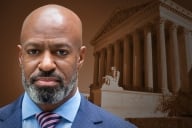You have /5 articles left.
Sign up for a free account or log in.
Black students on many college campuses complain about attention they receive in the form of racial profiling from police officers -- and about what they consider insufficient attention to racist threats they receive. These issues have come to a head this week at Colgate University and St. Olaf College.
Concerns About Profiling at Colgate
At Colgate, in New York State, campus security sent an alert to all students Monday night saying that someone had been reported entering a campus building with a gun. Another alert followed, reporting an "active shooter" and ordering a lockdown. Word of the alerts spread, students were scared and social media featured "pray for Colgate" messages.
There was no gun and no danger. There was a student -- a black student -- carrying a glue gun needed for an art project. The alerts angered many on the campus, black students and others as well. They held a rally on campus Tuesday, chanting, "Black lives matter." Students asked how a situation could escalate so quickly when the student with the glue gun did nothing wrong. Many noted incidents around the country in which unarmed black men and children have been fatally shot by police officers who have said they believed the victims had weapons.
Brian W. Casey, Colgate's president, released a statement Tuesday expressing his concerns about what happened and promising a full report within 10 days. He said that he believed profiling may have played a role in the response to the incident, and he asked the campus safety director, Bill Ferguson, to take an administrative leave during the review. Ferguson led the response Monday night. Casey also noted that the original report to the security office came from a Colgate student.
"It is important that we understand the role that implicit racial bias had in the initial reporting of and responses to the events of last night. I want to make sure we speak with those who made and received the initial report to understand the role this played." Casey wrote.
A Failure to Respond at St. Olaf?
At St. Olaf, in Minnesota, hundreds of students held a sit-in over the weekend in the student center to demand that the college take steps to protect black students. The spark for the protest was the discovery of a racist note addressed to a black woman, the latest in a series of such notes received by black students at the college.
Many students boycotted classes Monday and instead helped draft demands of a group called the Collective for Change on the Hill. The demands included that the college use "an honest and strict zero-tolerance policy on racial, sexual and homophobic epithets for faculty, staff and students. We demand that these hate crimes are held with the same sincerity that the college holds to its no-tolerance policy for drinking and smoking. This means that when incidents like those described occur, the college will impose real consequences from citations to even potential expulsions."
The demands went far beyond that issue and included calls for more hiring of minority faculty members and the creation of "a comprehensive racial awareness and inclusive curriculum. This curriculum will be mandatory for all students, faculty, staff and administration as it should be enforced throughout all campus departments and units. This program will be vetted, maintained and overseen by a board comprised of students, staff and faculty, which 50 percent identify as people of color." Further, the demands call for courses in Western culture to be changed to "address histories of colonization, identity, institutional and systemic oppression."
President David Anderson signed a document called "terms and conditions of negotiations," which did not pledge to agree to the demands, but to respond in writing and in public to all of the demands by May 20. Then a task force will be appointed to study the demands and the administration's response. That panel of at least seven will be led by two faculty members of color and will include three students and one alumnus of color and a lawyer familiar with discrimination issues. Within 30 days of the task force issuing its report, the administration will be required to respond to its findings, in a public document.








